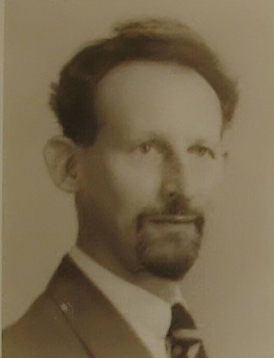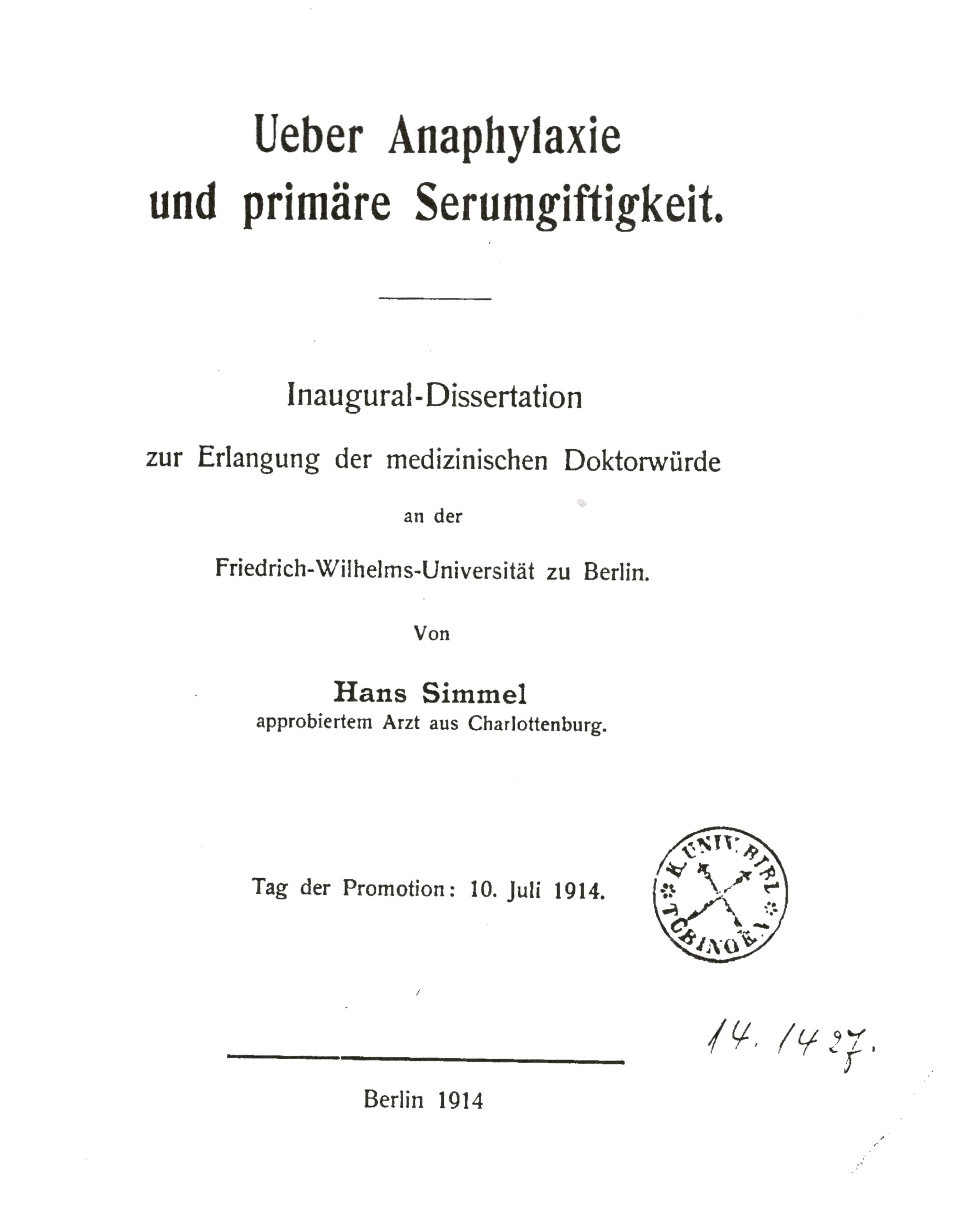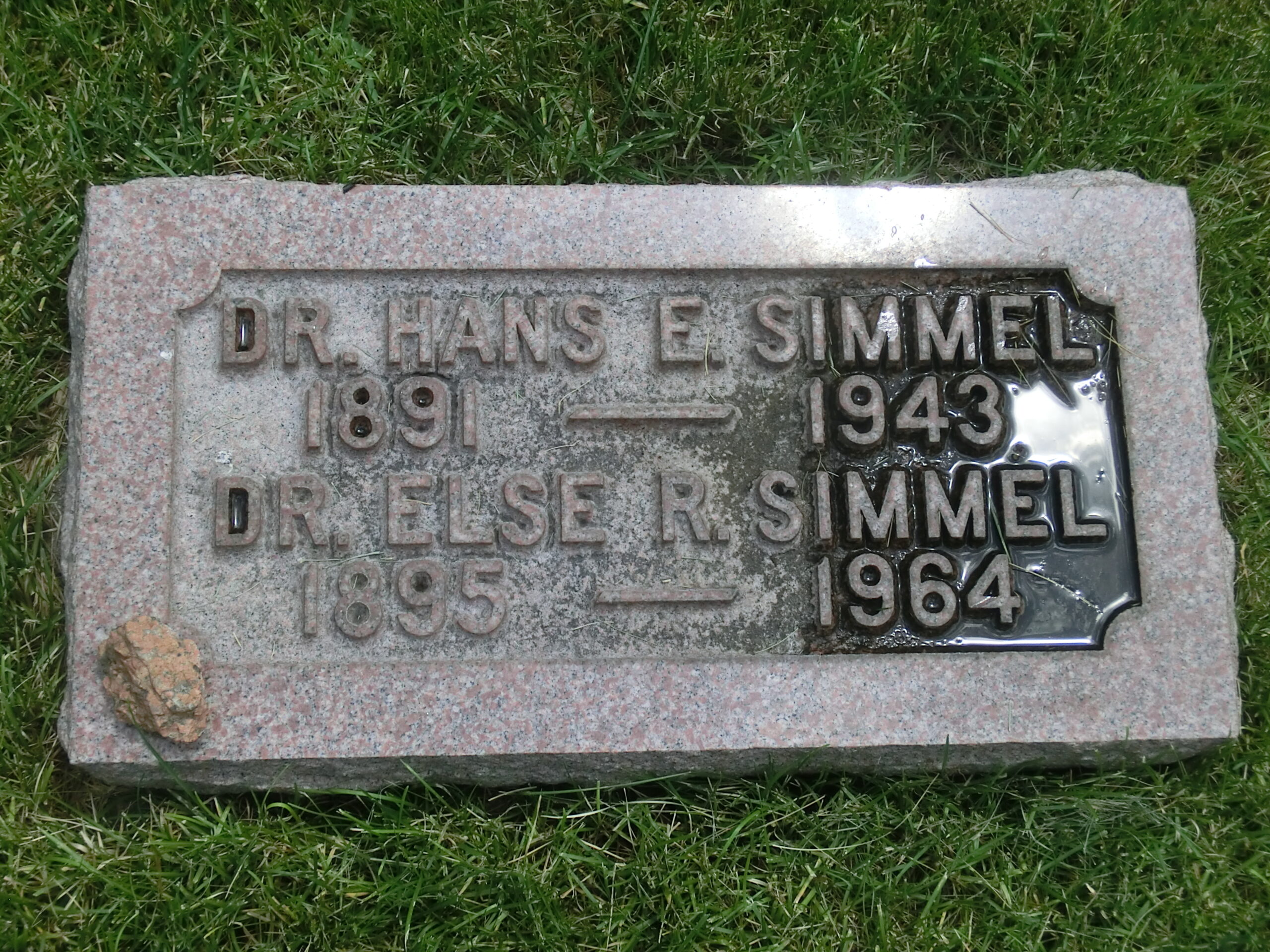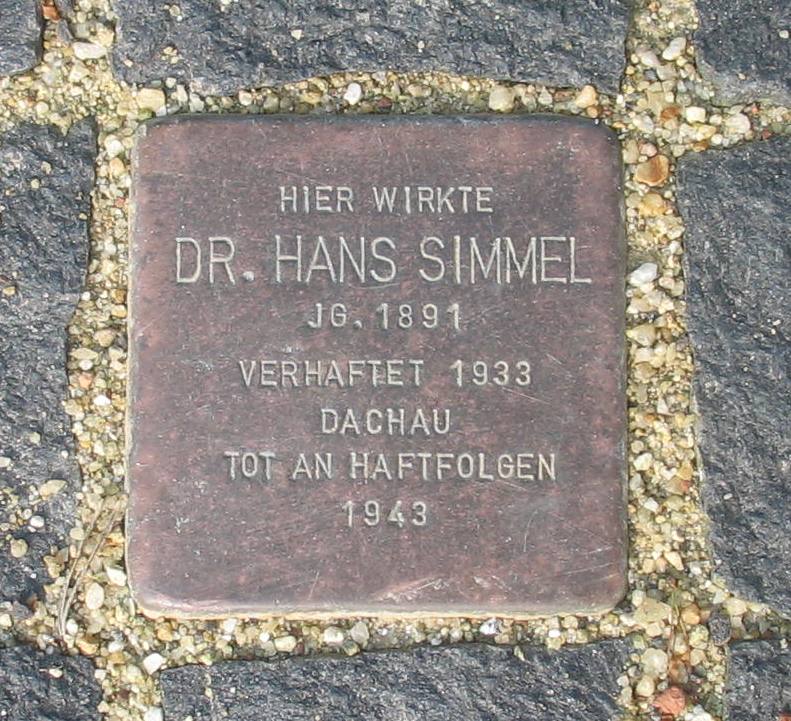Prof. Dr. med. Hans Eugen Simmel
- Berlin, 06.04.1891
- Colorado Springs, Colorado, USA, 23.08.1943
- Member since 1925
- Escaped to the USA in 1939
- Gera
- Specialist in internal medicine
Hans Eugen Simmel was born in Berlin Westend in 1891 as the son of the well-known sociologist Georg Simmel and his wife, the painter and philosopher Gertrud Simmel (pseudonym Marie Luise Enckendorff), née Kinel. His parents’ home was an important meeting place for scientists and writers in Berlin from 1890 until the beginning of the First World War.
Education and Places of Work
Hans Simmel was taught by a private tutor for a long time and then attended the Kaiser-Friedrich-Gymnasium in Berlin from October 1905. He graduated from high school on Easter 1908 and studied medicine in Berlin, Würzburg, Munich, and then again in Berlin. He passed the state examination at the Friedrich-Wilhelms University in Berlin on Easter 1913 and received his doctorate in 1914 with the thesis “Ueber Anaphylaxie und primäre Serumgiftigkeit”. He received his licence to practise medicine the same year.
Simmel undertook research on intestinal albumin absorption as a volunteer assistant to Rudolf Gottlieb at the Institute for Pharmacology at the University of Heidelberg in June and July 1914. His work was interrupted by the First World War, in which he actively participated in the medical service from August 1914. At the same time, Simmel was also able to temporarily work with Erich Meyer at the Medical University Polyclinic in Strasbourg from October 1914 to March 1917. He was then deployed as a medical officer to the Carpathian Mountains and the Ukraine. After the war, Simmel worked as an assistant to Robert Rössle at the Institute of Pathology at the University of Jena from May 1919 to October 1920.
Simmel moved to Felix Lommel at the Medical Polyclinic in Jena on 1 October 1920. He habilitated in 1923 with a thesis on the osmotic resistance of erythrocytes and was appointed professor (extraordinarius) of internal medicine at the Thuringian State University in Jena in 1925. Simmel received a broad training in internal medicine at the medical polyclinic in Jena, including X-ray diagnostics. In his scientific work, he took a particularly keen interest in haematological issues.
Hans Simmel took up the post of chief physician at the department of internal medicine at Gera Municipal Hospital on 15 June 1928 and quickly gained wide recognition. Simmel was exposed to anti-Semitic propaganda as early as 1932, due to his Jewish ancestry. He was temporarily imprisoned (“protective custody”) by the National Socialists in February 1933 and lost his position as head physician at the Gera Municipal Hospital on 24 March 1933. His teaching position at the University of Jena was revoked.
Simmel moved to Stuttgart with his family in 1934, where he was able to work in private practice. He was not granted a health insurance licence. He lost his licence to practise medicine on 30 September 1938. Since Stuttgart did not grant him a licence to work as a “Krankenbehadler” (Nazi terminology for Jewish doctors allowed to treat Jewish patients only) in Stuttgart, he became unemployed.
Simmel was imprisoned at Dachau concentration camp from 11 November to 12 December 1938 in the wake of the November pogrom.
Escape to England in 1939 and to the USA in 1940
Simmel had been trying to obtain an entry visa for the USA since October 1938 via the Frankfurt sociologist Max Horkheimer – who had been in New York since 1934, and whose parents Simmel had been looking after in Stuttgart – through the US sociologist Earl Edward Eubank, and with the support of the Aid Society of Jews in Germany. Hans Simmel fled to Switzerland together with his wife and the youngest of his four children in March 1939 and from there to England in August 1939, where they were reunited with their three older children. They had been in England since 1938. The family lived in South Ockendon, Essex, east of London.
Simmel was released from internment as an enemy alien in November 1939 at the outset of the Second World War. He received an affidavit for the USA. Simmel and his family left Liverpool on 9 March 1940 aboard the Royal Mail Ship Lancastria and reached New York on 21 March 1940.
After passing language examinations and the American medical exam, Hans Simmel worked as a volunteer physician at the Institute of Pathology at Mount Sinai Hospital in Chicago from the end of October 1940. He was appointed head of the pathology laboratory at Warren City Hospital, a 150-bed hospital in Warren, Ohio, on 1 December 1941. Hans Simmel received financial support in the USA from the Henry Dazian Foundation, which was headed by the internist Emanuel Libman at the time.
Hans Simmel died during a holiday in Colorado Springs, Colorado, USA on 23 August 1943 at the age of 52. His wife, the paediatrician (MD) Else Rosa Rapp died in February 1964. Both of Hans Simmel’s parents-in-law were deported to Litzmannstadt, now Łódź, Poland, and murdered in October 1941.
The Simmels are buried at Evergreen Cemetery in Colorado Springs.
The city of Gera commemorates Hans Simmel with a street named after him. A “Stolperstein” (stumbling stone) and a memorial plaque in a building named after him in today’s SRH Wald-Klinikum were added in 2008 for further commemoration.
Acknowledgements
We are very grateful to Mr Matthias Weibrecht, Gera, for the information on Hans Simmel’s biography. We would like to thank Cornelia Fris, chaplain of the SRH Wald-Klinikum Gera, for providing the photo of Hans and Else Simmel’s gravesite in Colorado Springs, USA. We would also like to thank the staff of the Johann Christian Senckenberg University Library, Archive Centre, for scanning the correspondence between Max Horkheimer and Hans Simmel.



